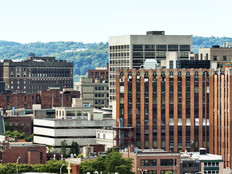Sneak Peak: What States Can Expect from FirstNet Consultations
Building a broadband network that spans 3.8 million square miles and stretches across 3,250 counties isn’t something one government agency or state can do alone.
In May, FirstNet (First Responder Network Authority) CIO Jim Gwinn told attendees at a government conference that FirstNet isn’t building the network in a vacuum and then selling the concept to potential users. “We are reaching out and pulling in the ideas,” Gwinn said. “The requirements are coming to us.”
It appears the FirstNet team is sticking to its word. The team held its first state consultation July 29 with officials in Maryland to discuss public safety broadband needs and expectations for future costs and coverage of the new network.
Maryland’s Network Needs
Think of Maryland’s consultation as the beta for testing how FirstNet will consult with other states in the future. The good news for those waiting on in-person meetings is that FirstNet is focused on listening to users’ needs, said Maryland's statewide interoperability director, Ray Lehr. Lehr’s team was pleased that FirstNet didn’t come with a take-it-or-leave-it attitude, where the capabilities of the network are concerned, he added. It also helped that Maryland submitted a comprehensive checklist to FirstNet this spring, which gave the team a good understanding of key issues prior to the consultation.
The meeting gave Lehr and his team a chance to ask questions and express their concerns. Lehr told StateTech he and his team wanted to know how much local jurisdiction states will have when the network is developed. The legislation that created FirstNet mentions fees for network users, but those costs are unknown as program officials work to understand the needs of each state.
Maryland’s police officers and state troopers pay about $50 to $75 a month per device. The cost varies by jurisdiction and includes the cost of accessing data over commercial wireless networks from laptops mounted in their cruisers.
“It has to be that price or below, ideally below,” Lehr said about FirstNet user fees. “It is that kind of discussion, but at this point, they can't say, ‘Hey Maryland, if you sign up tomorrow, here is what your rate will be.'”
Network coverage for the state’s rural areas also is critical. Today, if there were a major wildfire in the western part of the state, first responders would have to bring in their own communications, or cell on wheels (COWs), to support them.
“The issue of reliability received considerable attention given the state’s experience with a variety of natural disasters,” David Buchanan, FirstNet director of state consultation, wrote in a blog post. “Since 2000, Maryland has had 11 disaster declarations — including 7 storms, 3 hurricanes and 1 tornado. In addition, the state plays host to a number of large planned events every year, including the Preakness Stakes. Maryland officials emphasized the benefits of having a secure and reliable network that could improve safety and security at these events, during which commercial cellular networks often become congested and unreliable for public safety users.”
Making FirstNet a Reality
To imagine how FirstNet would support Maryland during an event like the Preakness Stakes, a thoroughbred horse race that draws tens of thousands of people to Baltimore, Md., state officials were asked to imagine what types of apps and how many network users they would need FirstNet to support. If they had a dedicated broadband network, rather than competing with people using the commercial network, what would that experience entail?
“It was a good exercise to put a cloak of reality” around FirstNet and how it could benefit first responders, Lehr explained.
The next state consultation will be in Minnesota, around September.
“Even though the [FirstNet] legislation passed a little over two years ago, it has taken that amount of time to get the staff in place because this is a very technical project,” Lehr said. “It has to be much more robust than a commercial network.”









